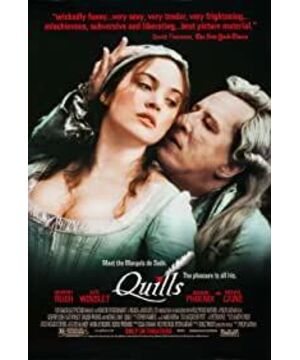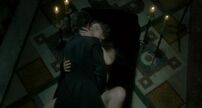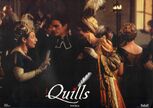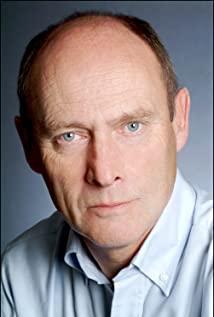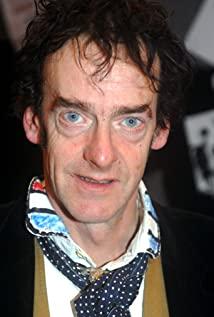If "madness" is used as a clue to refine the character structure of Quill, Sade is undoubtedly at the core of the intertwined character lineage. The emergence of its "madness" image has experienced the triple night of "madness" in Foucault's words:
The first is the Void Night of Falsehood. That is, in a narrow and vaguely restricted perspective, everything is trapped in a vague light, so when the real world is projected into the depths of the mind, a hallucination based on non-reality will be easier. Distorting the concept of reality, forming a fallacy that is regarded as truth by the accepted subject. Correspondingly, at the beginning of the film, the ongoing reality scene is that a young woman in fine clothes is bound by the executioner to show the public, ready to be executed and beheaded. The narration tells the cause and effect of both the real and the fantasy, which makes the audience mistakenly believe that the young woman in the picture in front of her is in a power relationship of love, and gets pleasure by being abused and humiliated, and death will lead her to the extreme of climax. The audience is influenced by the narration and substitutes the fictional words into the real scene. Until the camera turns to the Marquis de Sade who is writing the pen in the castle and looking at the window, the audience realizes later that the content of the narration comes from Sade's own mental image. The false creations that radiate out, he constructs his own dream kingdom of words through obscenity-style "compulsory interpretation", and does not care whether it is consistent with "facts", but only obeys his own "seeing" and his own "reason". . It is this fallacy that makes the audience submit to Sade's hallucination, seeing the dread of the young woman being touched by the executioner as a terrifying trembling with excitement. The film completes the explanation of the first attack of Sade's madness with the help of the opening. But what is interesting is that when the audience does not know that the narration actually belongs to Sade's fictional text, the audience seems to automatically match the scene before it with the information heard and establish a false truth belonging to the madman. That is to say, the audience completes the assimilation with the madman without knowing it, thus providing a path for the subsequent audience to enter the madman Sade.
The second is the night of the death penalty. A hand representing justice and order maintenance begins to intervene in the distorted mental image. This hand does not allow anyone to use passion and incitement to reverse the rules and divisions of truth and error, good and evil, normal and abnormal. Therefore, Sade is also logically locked up in a mental hospital, emphasizing the fallacy of Sade's mental image in the form of confinement (there may be a logical inversion in this, that is, Sade is not locked up because of madness, but by being locked up to prove its madness). However, in the movie, did Sade and the people related to Sade return to reality because of the "confinement", and did they escape from the mad mental hallucinations? not at all. Confinement is nothing more than a means of suppressing and correcting madness. The methods of suppression can be roughly divided into punishment and education. Sade experienced two completely different methods in the doctor and priest respectively (of course, these two methods are in the later episodes. "Alliance" occurred), however, the derailed passion not only did not become dry and thirsty, but further accelerated the flow of his inner blood. Irrigation nurtured people's desire to "escape the abnormal", and people's passions merged into the main stream like a tributary, making THAAD continue to multiply. Therefore, he must constantly look for an outlet to vent—the outlet he is looking for is writing. When the right to write is deprived of the outside world, he begins to find an outlet from his own body and resets the power of writing by himself. Therefore, he uses blood, Tongue, defecation, to prove his determination not to give up madness. In the end, he was not saved by confinement, not by morality, religion, or even intimidation, but by throwing himself into death, sinking from the madness of the never-filling nothingness into another silent nothingness. In a way, death becomes the triumph of the madman, because nothingness still exists and persists.
The third is the night of delirium. Foucault said that the night of delirium "is a night from which no one can return, a night that is constantly engulfed." Delirium is the ultimate truth and peak of madness. From then on, the dead Sade incarnates in battle, and the delirium engulfs the priest. , became his stepson, and even the new "Sade".
View more about Quills reviews


